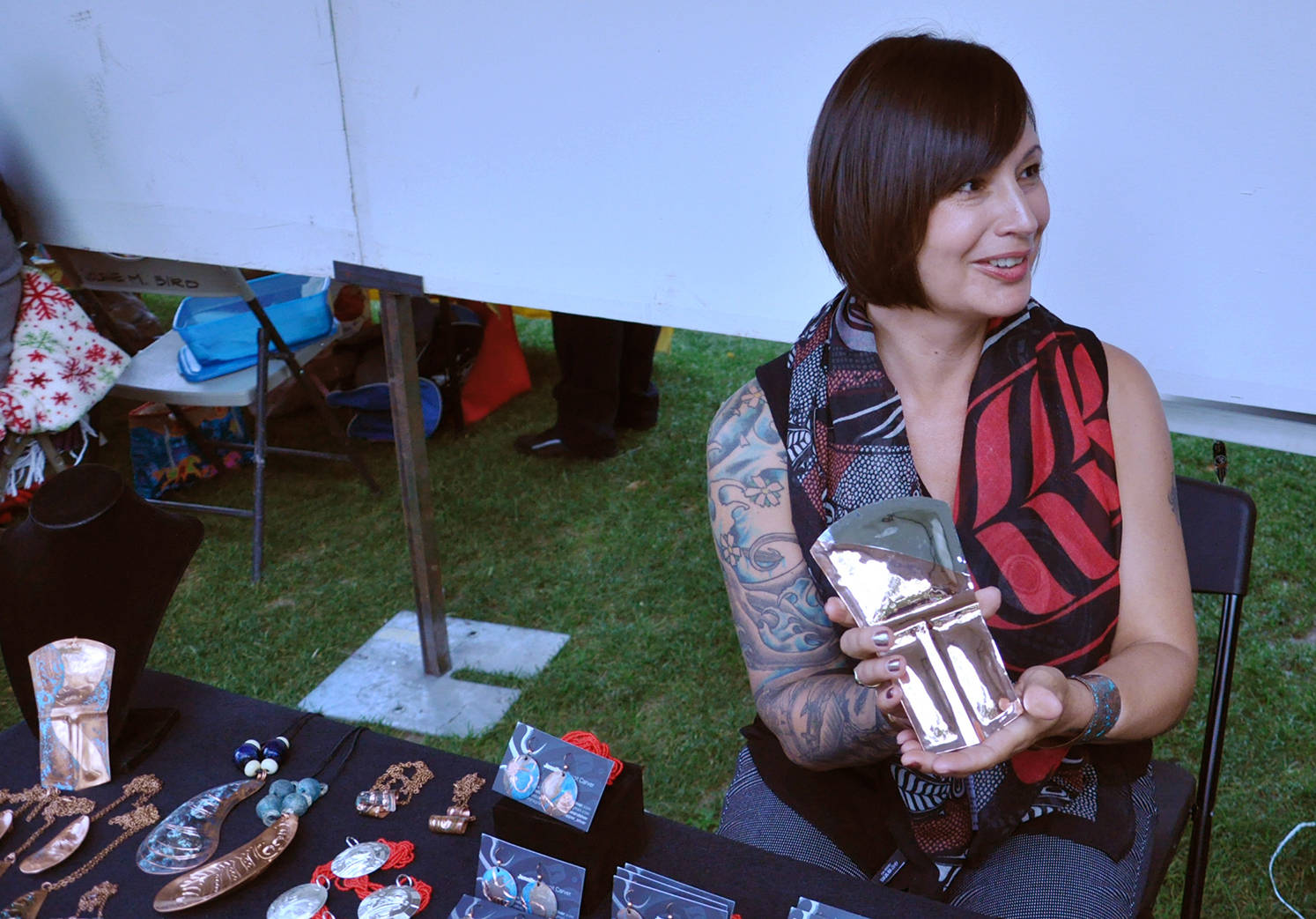The Santa Fe Indian Market is widely known as the largest and most prestigious Native art market in the world, drawing roughly 900 artists and 100,000 art lovers to the Southwest every year.
Though the majority of artists are regional, a handful of Alaskans have been taking part for decades. This year, market organizers made a change that points toward increased opportunities for Alaska Native and Northwest Coast artists: they switched to an all-juried application process, eliminating a tenure policy that provided longtime artists with a guaranteed spot.
The new system may have already had an impact on increasing diversity. The 96th annual market, which ran this year from Aug. 15-20, featured about 25 Alaskan and Northwest Coast artists, including some first-timers. Southwestern Association for Indian Arts (SWAIA) marketing director Amanda Crocker said she has seen the number of NWC artists go up.
“The number of Northwest Coast artists has increased and it’s really exciting,” Crocker said.
SWAIA Chief Operating Officer Dallin Maybee said the change to the application system makes the process more fair and equitable for all artists.
“Santa Fe Indian Market can now say with assurance that it is a fully juried show, as are all the major Native arts festivals in the country,” Maybee said, adding that diversity is central to the market experience.
“The diversity of Indian Market is truly remarkable – diversity among the tribes represented, diversity among the various art forms, and diversity within each artist’s range of expression. It has to be experienced to be believed,” he said.
At this year’s market, Alaskans were highly visible and highly praised. Tlingit jeweler Jennifer Younger of Sitka, Tlingit skin sewer Christy Ruby of Ketchikan, and Qagan Tayagungin basket maker Donald Johnston all had booths within steps of each other on the plaza, the market’s hub, showcasing traditional Alaskan materials of copper, fur, and baleen, respectively. Ruby garnered several awards, including Best of Show in the contemporary category in the Native American Clothing Contest, for her fur vest, and Johnston was honored with a Best of Division prize and three other awards for his baleen baskets.
Across the plaza was another first-place winner, Upper Skagit artist Peter Boome, who drew customers in with a large sign about Northwest Coast art. For the curious, he described the differences between Alaskan and Coast Salish formline (four main shapes, and no ovoids or u-forms), showcased in his serigraphs.
Lincoln Avenue was also an Alaskan and Northwest Coast art hotspot. Artists included Yup’ik skin sewer Peter Wiliams of Sitka; Aleut jeweler Denise Wallace; K’ómoks/Kwakwaka’wakw/Tlingit artist Andy Everson and Haida/Cree artist Jesse Brillon; Tsimshian basket-maker Loa Ryan and her daughter, Teresa; and Tlingit/Athabascan brother and sister team Rico and Crystal Worl of Juneau, who shared a space filled with paintings, prints and jewelry.
Crystal Worl was one of only 11 artists who also took part in the haute couture fashion show, a wildly popular, high-energy event that was sold out. Here too, Northwest Coast art was highly visible. Of the 11 designers, four including Worl featured aspects of formline design in their work: Haida designer Dorothy Grant, Kwaguilth and Sqaumish designer Pam Baker, and Kaska Dene designer Sho Sho Esquiro, whose 2017 collection was a collaboration with the late Tlingit weaver Clarissa Rizal.
Rizal herself had been a regular participant in the Santa Fe Indian Market, beginning in 1994. Other early participants were Reggie Petersen from Sitka, Haida basket weavers Diane Douglas Willard of Ketchikan and her daughter Gianna, and textile artist Dolly Garza, also of Ketchikan.
Over on Palace Avenue, Athabascan artist Glenda McKay, another award-winner, said she’d been taking part in the market about 10 years, along with jeweler Wallace. Further along Palace, Wallace’s daughter, Dawn Wallace, shared a booth with Mary Babic and Peggy McDaniel of Cordova. Close by was Haida weaver Jacinthe Two Bulls of Hydaburg, another repeat vendor.
Tlingit and Nuxalk artist Heather Dickson, whose headbands were wildly popular in Juneau during Celebration, was new to the market in 2017. She and Younger both said getting a chance to meet and trade with other artists was a highlight for them, and they both hoped to be back.
“Overall it was a good experience and I hope to go again next year,” Younger said.
• Amy Fletcher lives and writes in Juneau.

